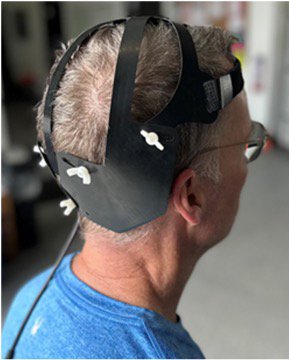New research finds red light therapy reduces Parkinson’s disease symptoms

Red light therapy has been shown to significantly reduce the debilitating symptoms of Parkinson’s disease in new research findings.
A group of Australian Parkinson’s disease sufferers who wore a helmet fitted with LEDs three times a week for five years experienced a “significant improvement” in their physical abilities and cognition.
The gut microbiome was also found to have “significantly altered” after five years of thrice-weekly treatment with a red light laser on the abdomen, with an increase in beneficial bacteria and a decrease in harmful bacteria.
Sign up to The Nightly's newsletters.
Get the first look at the digital newspaper, curated daily stories and breaking headlines delivered to your inbox.
By continuing you agree to our Terms and Privacy Policy.In a separate trial in Canada, Parkinson’s disease sufferers who combined exercises with photobiomodulation treatment to the head and abdomen saw a “significant difference” in timed “up-and-go” tests and anxiety levels compared to those doing the exercises alone.
Lead investigator of the Australian studies Ann Liebert, a research fellow from Sydney University, presented the results in the US last month, said there was a sustained improvement in participants’ microbiomes after 12 weeks, and again after five years, of regular photobiomodulation treatment.
“What we showed was that some of the bacteria in some of the participants that is associated with good outcomes and not Parkinson’s disease had improved, and some of the bacteria that were associated with poor outcomes and Parkinson’s disease progression had decreased,” she said.
“It’s very exciting and you can see where they should be getting worse, they either stay the same or maintain their improvement for five years.”

Parkinson’s disease is a progressive neurodegenerative disease, which is characterised by four key symptoms; tremor, slow movement, muscle rigidity and postural instability.
It affects more than 150,000 Australians and there is no known treatment that can halt or reverse its symptoms.
Dr Liebert said people had Parkinson’s disease for 10 years before diagnosis on average and, if diagnosed earlier, she believed red light therapy could prevent the illness from progressing beyond its mild stages as shown in animal models.
The Australian trial is now being extended for another two years among the remaining five, out of an original 12, participants.
As well as improved movement and cognition, some participants regained their sense of smell and reported better sleep, mood and motivation. One man regained the ability to play the guitar after four weeks of treatment.
Dr Liebert said photobiomodulation worked to improve cell function and decrease inflammation in the body.
“We increase the powerhouse of the cell, which is called the mitochondria,” she said.
“And so overall, there’s an increased action of mitochondria, which means that there’s more energy for the cell to action on, and that also helps all of the cellular processes and makes the cells work better.”
Photobiomodulation is non-invasive, non-thermal and safe with no known side effects. It is hoped that it can become part of the standard treatment regime for Parkinson’s disease.
